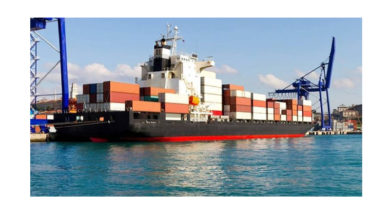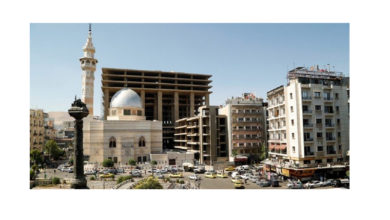How to Decide Which Textile Printer to Consider
More and more printing shops are considering entering the world of printing on textiles. Or, if the print company has already started, they are considering moving out of entry-level into more sophisticated textile printer options. To assist print shops and distributors of the Middle East and neighboring countries who attend SGI Sign Middle East every year in Dubai, we provide tips and suggestions in this article via ME Printer magazine.
Inks, Printheads, and Structure of the Printer are the key factors
First, it helps if you decide what materials you absolutely need to print on. You can decide what ink is viable only once you know what materials you will focus on. We will cover ink and fabrics in a separate article, since textile inks is an entire article unto itself, and printable fabrics can actually be several articles: soft signage, and then materials for apparel/home furnishings, etc.
 Second, you need to understand the pros and cons of each print head. We respect all print head technology, but having seen some print head brands simply not being wildly successful with water-based inks for textiles, I would not jump at a quarter-million dollar textile printer which had that brand of print head; I would prefer to focus on the print heads which have a proven track record with textile inks and with minimal issues.
Second, you need to understand the pros and cons of each print head. We respect all print head technology, but having seen some print head brands simply not being wildly successful with water-based inks for textiles, I would not jump at a quarter-million dollar textile printer which had that brand of print head; I would prefer to focus on the print heads which have a proven track record with textile inks and with minimal issues.
When I am at trade shows I can’t help notice that the print head brand is not the first or major question that a distributor or print shop owner or manager asks about. As soon as it is possible to get additional training in printhead demo rooms, we will translate the technology into terms that are easier to understand. Our goal is to assist distributors to understand which kinds of printers they should (and should not) distribute, and the same goes for print shop owners and managers.
The third crucial aspect in helping you decide which textile printer to select – structure and engineering of the printer’s textile feeding system – is as under-represented and even less discussed than print head options. So I will begin my coverage of textile printers with this crucial aspect. Let’s first have a basic list of categories:
Entry-level (textile printer structure)
• Print on transfer paper (which then has to be sublimated in calender)
• Print direct-to-fabric (disperse dye sublimation ink, which then has to be sublimated: hot air or oil cylinder)
More Professional Solutions (definitely not low-bid)
• One printer has a single ink which can handle both transfer paper and direct-to-fabric. And feeding system can handle a diverse range of materials
High-end
At high-end, in addition to sophisticated feeding and take-up system (rollers), it helps to have heated oil cylinders instead of hot air do the sublimation.
Sticky-belt printers
Can handle textiles which may stretch if fed through just roller system.
Flatbed textile printers (but not sticky-belt)
These printers have comparable table and gantry of a UV-curable printer or an XY flatbed digital cutter (but they jet the textile ink of your choice)
Now lets add some comments on each category of textile printer structure:
Entry-level
These have rudimentary feeding systems left over from 10 to 15 years ago (entry-level solvent printers or entry-level water-based photo printers). Most cheap ‘textile printers’ are not engineered from the ground up to handle fabrics or textile inks. Most of these generic signage printers do not have a special feeding and take-up system made carefully to handle moving fabrics.
More Professional Solutions (definitely not low-bid)
A growing trend is for ink companies to offer one ink which can be used both for printing on transfer paper and for printing direct-to-fabric. This way you don’t have to change ink. Changing ink wears out your printheads (and wastes ink) because of all the flushing.
But, be wary: merely adding a new kind of dual-purpose ink is not the full solution. A complete solution requires the printer engineers totally improving the entire roller-based feeding and take-up system (since with ‘two kinds of ink’ you can now print on a wider range of materials (in addition to transfer paper). The special feeding and take-up rollers are not cheap, so I would not recommend a low-bid printer brand or model for hoping the dual-purpose ink will be able to have an impressive range of materials that can feed acceptably through the printer.
High-end (roll-to-roll)
At the high-end you can get printers which are so large they are potentially in-line components of mass-production, 24/7. These are million-dollar printers that you obviously need to study and compare thoughtfully.
 Sticky-belt printers
Sticky-belt printers
Not many entry-level printers have a sticky-belt system (due to the cost). As with all printers, be sure the brand you select has plenty of experience with sticky-belt systems. DigiFab is one example of experience, as well as Italian brands. In addition to flexible fabrics, in theory you may also prefer a sticky-belt printer for super-thin transfer paper.
There are several unexpected sticky-belt printers combining a Mutoh or Seiko solvent printer with a giant sticky-belt. The hope is that the sticky-belt will replace the solvent printer roller-feeding of the original Japanese printer. I am always impressed with innovative technology, but I personally prefer an ink delivery system which is engineered by chemists who know the world of textile inks inside out.
Flatbed textile printers (but not sticky-belt)
SHIMA SEIKI tends to exhibit only at ITMA in Europe, sometimes FESPA Europe, or in Italy (fashion textile production center of Europe). You can select acid dye, reactive dye, or pigment inks. I rarely see other brands attempting to print on fabrics with a flat fixed bed.
Summary on tips and suggestions for textile printer options:
Even multi-million dollar, highly respected printer brands have not been able to make their first generation textile printers function perfectly. The Aquajet worked great in the demo room, but after it got out in the real world the choice of printhead model and brand evidently caused issues (since not all piezo heads can handle water flawlessly).
Some of the most respected brands of UV-cured printers have understandably wished to create textile printers at the high-end. But again, most of their first-generation printers did not do well outside the R&D department and outside the factory demo room.
 The best tip: if you want a textile printer, go to a brand which is now making its third generation textile printers. Be wary of buying any used textile printer, even from a world-class brand, if that textile printer was first-generation.
The best tip: if you want a textile printer, go to a brand which is now making its third generation textile printers. Be wary of buying any used textile printer, even from a world-class brand, if that textile printer was first-generation.
And for a brand from China, look for a factory which has considerable experience OEM-manufacturing for several world-class brands. RTZ Flora is an example of a company with UV and solvent experience, but has been making textile printers long enough now that their 2016 models are quite impressive.
And it should be equally obvious, that a company which focuses 100% on textile printers, such as Reggiani, has the level of experience that will make a significant difference (now efi Reggiani).
This is a polite way of saying, if you want entry-level, and want to practice with a lower cost printer, then entry-level is one way to enter the world of printing on fabrics. But sooner or later you are stuck needing a more sophisticated printer. The more reliable printer can handle more kinds of textiles because it has a significantly more professional feeding and take-up system.
This article benefited from discussions with Maria Renee Ayau, textile printer, workflow and textile ink evaluation manager at FLAAR Reports.
This article is based on experience including visiting the ITI textile printer demo room near the Dallas-Ft Worth airport in Texas, where Paul McGovern and Noel Mareno provide access to the remarkable 3.2m textile printer.
We provide lists of every brand and every model of textile printer in our TRENDs series for ITMA expo (held every four years so the most up to date event is 2015





